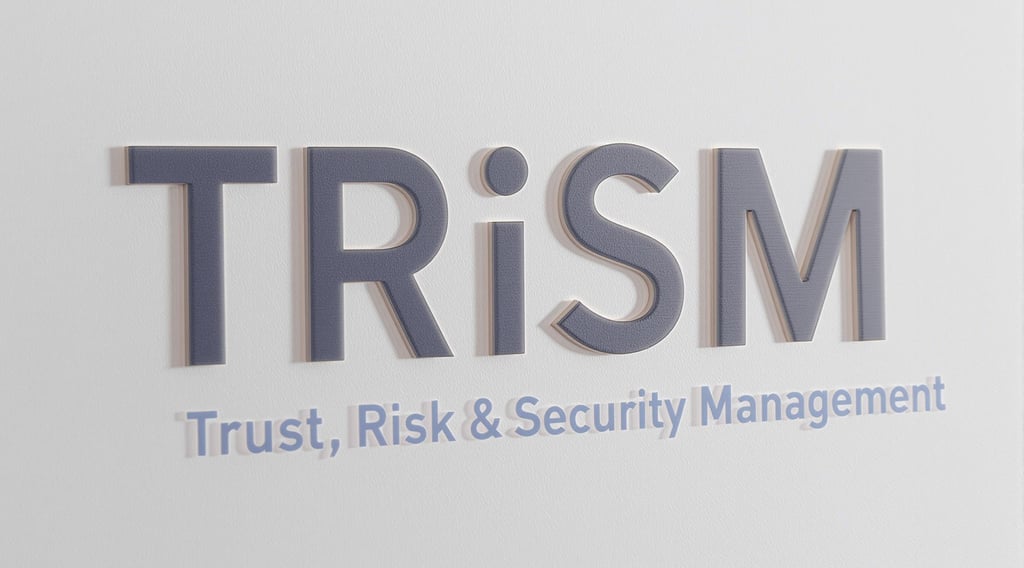What is TRiSM (Trust, Risk & Security Management)?
7/3/20252 min read


What is TRiSM?
TRiSM, an acronym for Trust, Risk, and Security Management, encompasses a framework that integrates various elements crucial for safeguarding assets, ensuring operational continuity, and maintaining customer trust. In today’s rapidly evolving business landscape, organizations face numerous challenges, including cyber threats, regulatory compliance, and reputational risks. Therefore, establishing a solid TRiSM strategy is essential for organizations to thrive securely.
Components of TRiSM
TRiSM is rooted in three core components: trust, risk, and security. Naturally, trust forms the foundation of any relationship—be it between businesses and customers, or among stakeholders within an organization. Organizations must build and maintain their reputation, which is directly affected by the trust they cultivate.
Risk assessment involves identifying potential threats that might hinder business operations. These risks can be categorized into various types, including strategic, operational, financial, and compliance risks. Companies must evaluate the likelihood and impact of each risk to mitigate them effectively.
Security management represents the protective measures and protocols implemented to safeguard information, assets, and personnel against potential threats. This includes cybersecurity systems, data encryption, and physical security controls.
How to Implement a TRiSM Strategy
Implementing an effective TRiSM strategy entails a structured approach to managing trust, risks, and security aspects holistically. Here are key steps to consider:
Assessment: Conduct a comprehensive assessment of your current trust levels, potential risks, and security measures in place. Utilize audits, surveys, and interviews to gather relevant data.
Framework Development: Develop a TRiSM framework tailored to your organization’s needs. This framework should outline roles, responsibilities, policies, and procedures.
Training and Awareness: Educate employees about the significance of TRiSM. Training should encompass aspects of trust, identification of risks, and security protocols to foster a culture of vigilance.
Monitoring and Review: Regularly monitor the effectiveness of your TRiSM strategy. Measure compliance, assess emerging risks, and adapt strategies accordingly to ensure relevance and efficiency.
By adopting a systematic approach toward TRiSM, organizations can reinforce their resilience against uncertainties while enhancing stakeholder confidence.
Conclusion
In summary, TRiSM—Trust, Risk, and Security Management—plays a central role in modern organizational dynamics. By understanding its components and implementing a robust strategy, businesses can navigate challenges and build enduring relationships based on trust. As organizations prioritize TRISM, they ensure not only their own sustainability but also the security and confidence of their stakeholders.
Connect:
(571) 306-0036
© 2025. All rights reserved.
